Since its inception in 2008, the
Marvel Cinematic Universe (MCU) has masterfully translated a plethora of comic characters onto the silver screen, breathing new life into them and weaving them into an expansive, interconnected tapestry of films. Time has seen a growing cast added to this cinematic juggernaut. From standalone showcases to big-ticket events like "Infinity War" and "Endgame," every character has had their moment to shine. Now, while these movie adaptations usually stay true to the core of the comics, there's the occasional curveball. We sometimes stumble upon a character who looks and feels distinct from their comic book version for various reasons - be it certain origin nuances or how they've evolved in front of the audience. S o, with a sprinkle of curiosity and a dash of excitement, let's dive into these 10 MCU characters that diverged from their comic book selves!
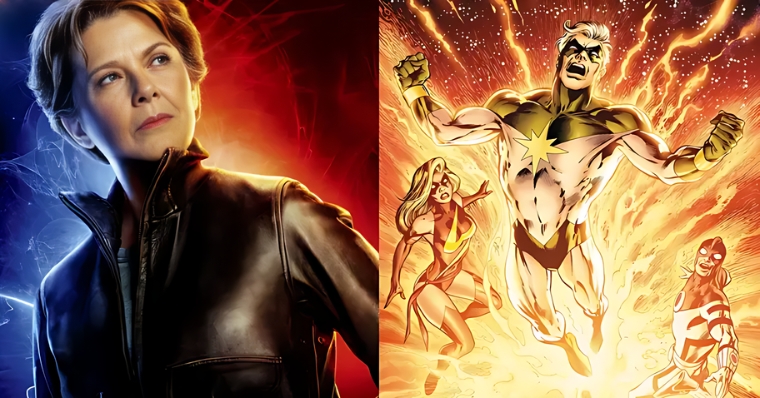
Mar-Vell
Step into the vibrant world of the Marvel Cinematic Universe (MCU), where the unexpected happens, and characters come alive in ways you never imagined. In the heart of this universe, we have the enigmatic Mar-Vell, introduced in "Captain Marvel" as a Kree pilot with a deep connection to Earth and an intricate dance of fate with Carol Danvers. When an explosive plot by a nemesis unfolds, Mar-Vell inadvertently transfers some of her unique genetic material to Carol, giving her phenomenal powers. Tragically, this same event leads to Mar-Vell's untimely demise, becoming an essential piece of Captain Marvel's origin story. Yet, if you flip through the pages of Marvel comics, a different narrative emerges. In inked illustrations, Mar-Vell was distinctly male, quite the departure from the movie adaptation. More so, he wore the title of the first Captain Marvel, navigating a series of Earthly escapades before eventually succumbing to the ravages of cancer. Mar-Vell's cinematic representation underwent a significant transformation to shed light on this divergence. The film portrayal features Mar-Vell as a female Kree scientist, played by the talented Annette Bening, earnestly searching for a peaceful resolution to the Kree-Skrull War. Rather than being a bystander in the event that grants Carol her superpowers, as in the comic "Marvel Super-Heroes #12," Mar-Vell's work in the movie is the catalyst. This change intertwines her fate more deeply with Carol's, making the latter actively participate in her destiny. Zooming into the broader MCU tapestry, Carol Danvers' story adheres closely to her comic roots, stemming from her introduction in "Marvel Super-Heroes #13." However, the film spins the tale with a fresh lens. Instead of a DNA fusion resulting from an explosion, Carol draws her strength from a Tesseract-enhanced engine. Her cinematic existence is that of a human, fortified by Tesseract energy and Kree blood coursing through her veins post-transfusion, a slight deviation from her half-human, half-Kree comic identity. Mar-Vell's gender swap in "Captain Marvel" adds layers of feminist undertones to the narrative. Carol's idol and inspiration behind her transformation into a super-hero is Mar-Vell, a fierce woman who risked everything for the greater cosmic good. This depiction of Mar-Vell reaffirms the profound impact of female characters in shaping the MCU narrative.
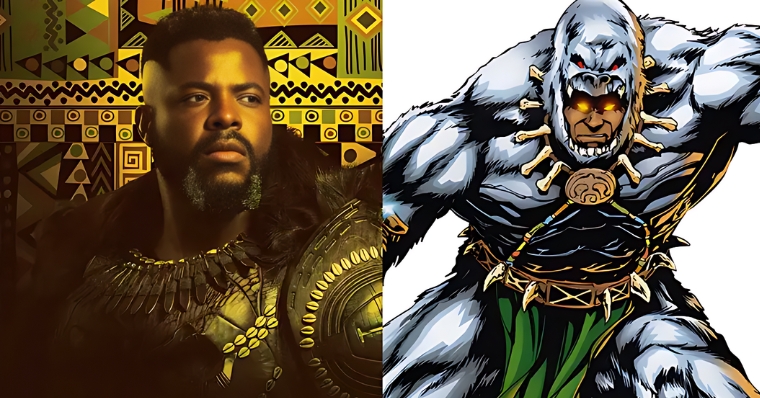
M'Baku
Initially conceived in the Marvel comics, M'Baku is a native of the enigmatic Wakanda, and let's just say he's not your typical friendly neighbor. He's deeply entrenched in the Gorilla Cult and takes on the alter ego of "Man-Ape," constantly scheming to oust T'Challa, aka the Black Panther, from the Wakandan throne. But M'Baku's cinematic iteration, portrayed with a mixture of grit and charisma by Winston Duke, is a far cry from his comic book persona. While he does challenge T'Challa and questions Wakandan traditions, he evolves into a likable and even heroic character. Take, for instance, the film "Wakanda Forever," where he rises to the role of a Wakandan general, spearheading the resistance against the intrusive forces led by Namor. Also, his initial "animalistic" appearance got a respectful revamp, avoiding harmful racial stereotypes—a shift worthy of applause. It's important to highlight why this transformation was necessary and culturally sensitive. The comic book version of M'Baku was tied to the White Gorilla Cult, a faction that killed white gorillas and indulged in rituals that raised serious ethical questions. This antiquated portrayal was rich soil for racial stereotypes, making the character somewhat problematic. Marvel's filmmakers made a deliberate effort to cast aside racially insensitive elements, such as dropping the "Man-Ape" moniker and redesigning his look, creating a more relatable and responsible depiction. In terms of his development in the MCU, King M'Baku is a dynamic figure. Originally a critic of T'Challa's rule, he pivots when he perceives the imminent threat from Erik Killmonger. This eye-opening revelation motivates him to ally himself with T'Challa, culminating in a seat on the Tribal Council. But wait, his story doesn't stop there. He's instrumental in defending Wakanda against Thanos' savage army and plays a significant role in the Battle of Earth. After the loss of T'Challa, M'Baku emerges as a natural leader, guiding Wakanda through crises and ultimately ascending to the throne. In contrast, the comic book M'Baku—created by Roy Thomas and John Buscema and first appearing in "The Avengers #62" (March 1969)—is a volatile adversary. His nefarious agenda involves returning Wakanda to a primitive state. His comic-book journeys take him from Wakanda to America, aligning him with multiple villainous factions like the Lethal Legion and the Masters of Evil. Despite occasional invites to important events (like T'Challa's wedding to Ororo Munroe, aka Storm), M'Baku generally remains a polarizing figure who keeps you guessing. To sum it up, the two versions of M'Baku serve as fascinating studies in character evolution and cultural sensitivity.
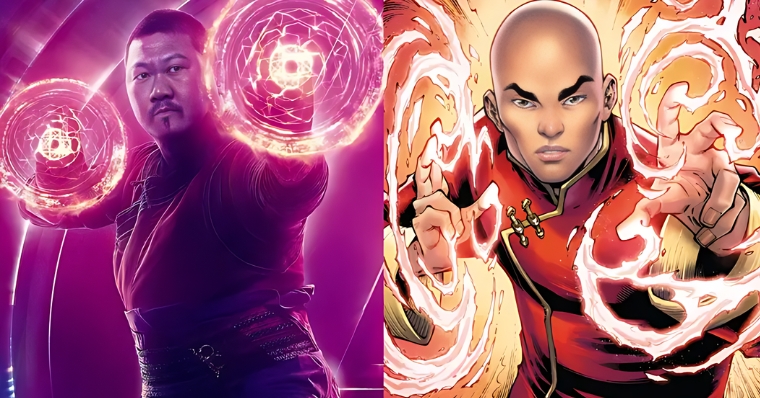
Wong
In the sprawling landscape of the Marvel Cinematic Universe, one character that caught both audience attention and admiration is Wong, marvelously portrayed by Benedict Wong. In the MCU, Wong is a scholar of the mystic arts under the mentorship of the Ancient One. Upon her death, he assumes the role of guardian of the "New York Sanctum Sanctorum" and even takes on the illustrious title of Earth's Sorcerer Supreme. In contrast, if you delve into the comic books where Wong first made his appearance, you'll discover a character with more of a sidekick vibe. Created by the legendary Stan Lee and Steve Ditko, Wong debuted in "Strange Tales #110" back in April 1963. There, he's largely portrayed as Doctor Strange's butler, albeit one with a magical touch. While he has had standout story arcs that demonstrate his depth, he's never ascended to the title of Sorcerer Supreme in the Marvel comics universe. Moreover, in comic books, Wong is often more stoic and reserved, a far cry from the MCU's more fleshed-out and dynamic version. Isn't it fascinating how characters evolve? The MCU's Wong is a Sorcerer Supreme, a role he never quite reached in the comics. That's some serious character development, wouldn't you agree? Wong's comic book origin has deep roots in Tibetan mysticism—an heir to a line of monks who have served the Ancient One for generations. His father, Hamir the Hermit, was also a Sorcerer Supreme of Earth's dimension until his passing. Naturally, Wong followed in these ancestral footsteps, dedicating his life to the mystical arts and serving the Ancient One. This service eventually extended to Doctor Strange, forging a bond that transcended the mere master-servant dynamic into one of mutual respect. Speaking of relationships, Wong had a romantic entanglement with a woman named Imei, to whom he was predestined to be wed. Yet fate had other plans, leading to Imei's tragic death—a situation that momentarily strained his relationship with Doctor Strange. The emotional complexity this brings to Wong's character is remarkable, and it shows the depths of his loyalty and the limits of his patience. When it comes to Wong's combat prowess, don't underestimate him just because he's often seen in a servant role. The guy's a martial arts expert, and while he claims not to possess "powers of sorcery," he has enough magic to make you think twice . He can craft magic-resistant barriers, teleport people, and even read arcane languages. Sure, he's not Doctor Strange, but he's far from being a pushover. According to Kevin Feige, the president of Marvel Studios, the intention behind the MCU's portrayal of Wong was to shatter stereotypes, specifically the 'white hero with an Asian servant' trope. Wong is presented as a formidable master of the mystic arts in his own right. His magic-wielding capabilities even outshine Doctor Strange at several moments in the narrative. This significant shift ensures that Wong is an equal in the mystical hierarchy, not a subservient sidekick. In the MCU, Wong has had a thrilling trajectory. He went from guarding ancient texts in the New York Sanctum to teaming up with Iron Man when the Black Order invaded New York. With Doctor Strange's temporary exit—thanks to Thanos' galaxy-altering snap—Wong stepped up as the new Sorcerer Supreme. His adventures also led him to meet and befriend individuals like Shang-Chi and the Abomination and even to get entangled in legal drama with She-Hulk. Recently, Wong was identified as the key player in the war against Wanda Maximoff, the prophesized Scarlet Witch, who sought to hunt down America Chavez, a teen capable of multiverse-hopping. Wong's tactical wisdom and magical skills were crucial in averting potential catastrophes. It's clear that Wong's character is not just limited to Earth's dimension but extends across the multiverse.
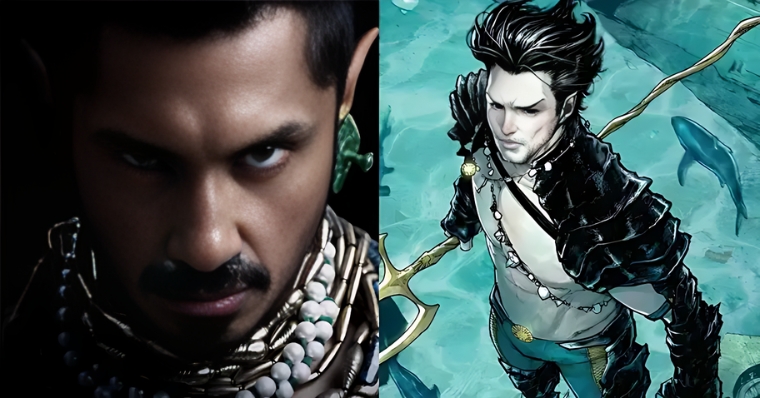
Namor
This Marvel heavyweight has been around since 1939, crafted by writer Bill Everett. He's a Golden Age icon, sharing the limelight with legends like Captain America and the original Human Torch. Now, Namor the Sub-Mariner has finally surfaced in the Marvel Cinematic Universe, portrayed by Tenoch Huerta, and let's just say he's not your grandpa's Namor. The most glaring change? Namor's ethnicity. In a move that continues Marvel Studios' push for greater representation—a trend we've seen in Phase Four projects like "Shang-Chi and the Legend of the Ten Rings" and "Ms. Marvel"—Namor is now of Mesoamerican descent. This fresh take diverges significantly from the comic book version, where he's often portrayed as an Atlantean of Anglo-European roots. It's a big win for LatinX representation, building on the precedent set by America Chavez in "Doctor Strange 2." Speaking of change, let's talk fashion. Comic book Namor is basically a minimalist, sartorially speaking, often seen sporting little more than green swim trunks. However, Huerta's MCU version brings some Mesoamerican flair to the underwater kingdom, donning not just the iconic green trunks but also a jaguar headdress, jade nose studs, earrings, and vibranium-gold alloy collars. He's essentially the haute couture version of undersea royalty. And then there's the locale. In the comics, Atlantis was originally situated under the Antarctic ice pack and later moved to the Pacific Northwest. But MCU's Namor reigns over Talokan, an underwater kingdom in the Atlantic Ocean. With stunning CGI visuals, Talokan is depicted as a vibranium tech-augmented paradise. Its architecture is a blend of traditional Mesoamerican designs and futuristic Marvel tech, a far cry from the Eurocentric Atlantis we've seen in pop culture and, notably, DC's Aquaman movie. Even Namor's personality has been, shall we say, humanized a bit. Comic Namor can often come across as an egomaniac, but MCU Namor is shown as a communal leader deeply connected to his people. He might still be arrogant, but he has a side that genuinely cares for his community, which is evident when he gives Shuri a tour of his underwater realm. Differences extend to his origins, too. Classic Namor is born of an Atlantean princess and an American sea captain. His powers are a genetic lottery won from his mixed heritage. In the MCU, his powers are rooted in vibranium soil-enriched seaweed ingested by his mother—quite the prenatal vitamin, I'd say. The impact on him is cellular, making him more of a super-mutant while also changing the skin color of his people from blue to a natural shade. When it comes to adversaries, the film continues to rewrite the narrative. Originally, Namor was positioned as an enemy of the United States. In the MCU, he shares a more symbiotic rivalry with Black Panther, an evolution reflective of modern geopolitics. But don't worry, comic purists, elements from the original antagonistic dynamics—like his past feuds with the android super-hero The Human Torch—aren't entirely forsaken. Regarding super teams, the MCU Namor is a lone wolf for now. Over in the comics, he's been a member of elite groups like The Invaders and The Defenders. However, it's early days in the cinematic universe for our Sub-Mariner, and the odds are high that he'll join forces with other MCU stalwarts sooner or later. While the film gives us a glimpse of Namor's abilities, including his telepathic rapport with sea life, comic book fans know he's got an even broader skill set. From the electric abilities of an eel to hydrokinetics, comic Namor packs more underwater punch. We'll have to wait to see if the MCU version will unfurl more of these hidden talents. Then, the vibranium plotline knits him into the greater MCU fabric. Namor's Talokan has its own cache of this super-metal, making it a major player in the vibranium trade. This ties into the movie's core plot and distinguishes him from his comic counterpart, who's more concerned with guarding Atlantis against surface dwellers than hoarding precious metals. Lastly, there's a divine touch to MCU's Namor, courtesy of his unique power of flight. In the film, his people see this ability as a divine sign, attributing it to his rebirth incarnation as the Mesoamerican winged serpent god, K'uk'ulkan.
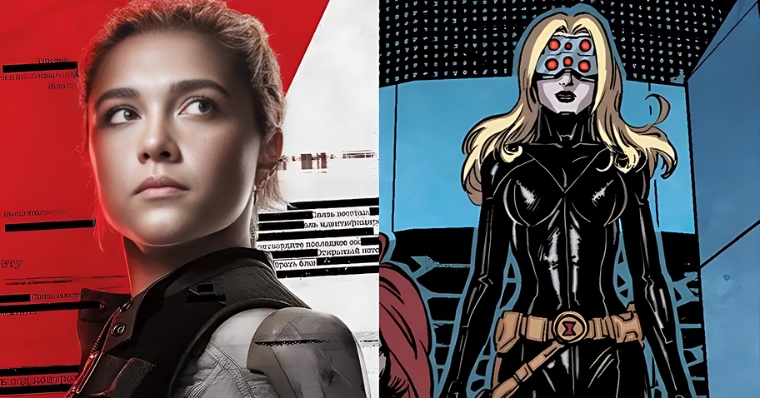
Yelena Belova
First introduced in "Black Widow," Yelena Belova comes off as a fierce warrior—trained in the not-so-tender environs of the Red Room and dead-set on reuniting her makeshift family, especially her "sister," Natasha Romanoff. Stepping into the shoes of the original Black Widow after her tragic demise, Yelena vows revenge, a commitment that earmarks her for a role with the Thunderbolts. But let's delve a bit into the ink and colors where Yelena got her start—in the Marvel comic books. Over there, she's far less "sisterly" and more of a competitor to Natasha Romanoff. She even spent years scheming to take Natasha down and occasionally teamed up with some of the great Marvel's supervillains. Sure, the MCU version influenced some recent comic book adaptations of her, but the original Yelena was far from the friendly figure she's become on-screen. When Yelena first appeared in the Marvel Cinematic Universe via "Black Widow" in 2021, she wasn't just another spy trained by the Red Room. No, she and Natasha had a past—a shared upbringing that added a whole layer of emotional complexity to Yelena's actions. Fast forward to the fourth episode of "Hawkeye," and Yelena reappears to eliminate Clint Barton, blaming him for her sister's death. It creates a spine-tingling suspense about her future trajectory in the MCU universe. Let's spice this up with some little-known details that only comic book enthusiasts might catch. For instance, Yelena's link to Cuba gets a soft touch in "Black Widow," merely serving as the backdrop to her pseudo-family's dissolution. But the comic book Yelena? She retires there, launching a new life as a businesswoman, even dabbling in lingerie design and modeling. This serene existence starkly contrasts her MCU portrayal as an unyielding assassin. Career-wise, the comic version of Yelena joins forces with S.H.I.E.L.D., taking her to exotic locations like the Savage Land. The MCU version? Let's just say S.H.I.E.L.D. is not on her radar, as her assassin work doesn't quite align with the organization's goals. You might remember that in "Hawkeye," Clint Barton doesn't even recognize Yelena. Their relationship is already complex in the comics but for different reasons. Comic Yelena sets out to eliminate remaining Hydra agents after becoming the new Black Widow, drawing the ire of Hawkeye and Bucky Barnes, who disagree with her extreme methods. Perhaps the most glaring divergence is Yelena's view on super-hero life. In the MCU, she ridicules Natasha's heroic posturing, even mocking her dramatic stances. Yet, in the comic book, Yelena doesn't just warm up to the idea of heroism; she embraces it fully, working alongside the Avengers and even Captain America. Family dynamics? Oh, they're drastically different too. The MCU version might have you believe that Yelena and Natasha are practically soul sisters, bound by shared memories of an Ohio childhood. In the comics, they're more like frenemies—each intent on proving herself as the true Black Widow. It's a rivalry that's been toxic and collaborative over the years. Now, those of you fixated on the details might notice a discrepancy in Yelena's appearance. While Florence Pugh portrays her with green eyes, comic book Yelena sports blue ones. Sure, it's a minor difference, but it's the kind that dedicated fans notice. The height difference—Pugh stands at 5'3", while comic book Yelena looms at 5'7"—also counts as one of those fun facts for the Marvel trivia nights. Lastly, let's talk about Yelena's sexual orientation. The MCU version doesn't delve into this yet. Still, according to one of her co-creators, Devin Grayson, comic book Yelena would likely identify as asexual—a nuanced trait that sets her apart from her more romantically-inclined sister, Natasha. In summary, the evolution of Yelena Belova across different mediums paints a fascinating picture. While each version remains compelling in its own right, the contrasts offer fans an intricate tapestry to explore, unravel, and endlessly discuss. Whether you're flipping through Marvel comics or sitting in a dimly lit theater, Yelena Belova serves up a hefty dose of intrigue, revealing the power of storytelling to adapt and evolve iconic characters.

Star-Lord
Marvel's Peter Quill, affectionately known to fans as Star-Lord, is a character who walks the line between two universes: the comic books and the Marvel Cinematic Universe (MCU). Sure, they share the same name and rock similar outfits, but that's about where the parallels end. In the ink-and-paper world of Marvel Comics, Peter Quill's backstory reads like the most epic of space operas. His mother, Meredith, didn't succumb to something as earthly as cancer. No, she was murdered in cold blood by extraterrestrials. Talk about a twist. And his father? He wasn't Ego the Living Planet. Instead, he was J'son, a space pirate and heir to the throne of the planet Spartax. It's an authentic Shakespearean tapestry of space politics and familial betrayal. Plus, let's not forget that if comic book Quill had Celestial blood like his MCU counterpart, the whole power stone saga in "Guardians of the Galaxy" would have been far less gripping. He would've become Stardust, not Star-Lord. And Yondu? The blue-skinned Ravager who kidnaps him in the MCU? In the comics, Quill never experienced this kind of space-boarding school. Instead, he was a full-grown adult and a NASA trainee when he seized the opportunity to swipe a Kree spaceship and dart into the cosmos. So, although the spirit of Peter Quill shines in both versions, the circumstances that created Star-Lord couldn't be more different. You may have found yourself wondering, "Why does MCU Star-Lord seem like he's just winging it half the time?" In the cinematic universe, Peter's a little rough around the edges, not always making the wisest decisions, especially when emotions run high Remember the whole "Let's punch Thanos" fiasco? Yeah, that. By contrast, the comic book Star-Lord is your classic stoic hero, driven by an unyielding sense of duty and honor. Over in Marvel Preview #4, where Peter Quill made his debut back in January 1976, this guy was bestowed with amazing technology that could put Tony Stark's best inventions to shame. For instance, he had a sentient starship named Ship that he could communicate with telepathically. His energy blasters? A force that could give Captain Marvel a run for her money. And on top of all that, he had the minor superhuman strength that elevated him to a level beyond mere mortals. MCU's Peter Quill is more than just a playlist and cool dance moves. Brought into the void of space as a child after the death of his mother, his character is tinged with vulnerability and a kind of impulsive emotional responsiveness. His upbringing with Yondu and the Ravagers certainly didn't provide the kind of moral compass you'd find in a traditional hero, which is why his leadership style is somewhat unconventional. In comparison, the comic book Star-Lord is a paradigm of what a hero should be—dutiful, honorable, and strategic. The comics depict a character who, despite his Earthly roots, is fundamentally a citizen of the universe, committed to defending the cosmic realm. He's more of a galactic knight than a quirky renegade. So, is MCU's Star-Lord weaker than his comic book counterpart? Depends on your yardstick. If we're talking raw power, MCU Star-Lord lost his Celestial juice after the death of Ego, landing him back in the realm of mere mortals. But in the realm of character complexity, MCU's Star-Lord gains points for being a multifaceted individual whose flaws make him relatable. While undoubtedly more powerful, the comic book Star-Lord operates with consistent skills, especially given his telepathic bond with Ship and impressive tech. His inner strength stems from his indomitable will, honed through trials and experiences that have made him a mature, duty-bound hero. The MCU Star-Lord seems weaker mainly because his emotional impulsiveness overshadows his skills and intelligence.
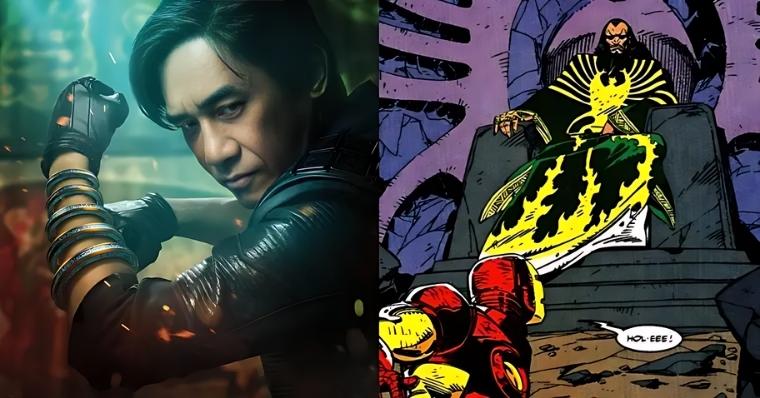
Mandarin
Marvel has a long history of iconic villains, but Mandarin, an original big bad dating back to 1964, takes the cake. Created by Stan Lee and Don Heck, Mandarin quickly became one of Iron Man's most formidable adversaries. Thanks to his ten high-tech rings—each with its own unique power—he's been a constant thorn in Tony Stark's side. The Marvel Cinematic Universe (MCU) has offered fans not one but three variations of this intriguing character. Aldrich Killian, portrayed by Guy Pearce in "Iron Man 3," appeared as a tech-savvy businessman. Trevor Slattery, played by Ben Kingsley, was a comically inept actor hired to impersonate the infamous villain. The most recent depiction, and arguably the most true to the original comic concept, is Wenwu, played by Tony Leung in "Shang-Chi and the Legend of the Ten Rings." However, Marvel Studios has taken some significant liberties with the character, and they aren't minor tweaks. Let's delve into the nuanced transformations, shall we? First off, let's talk about jewelry, or in this case, weaponry. In the comic books, the Mandarin's power rings are just that—rings worn on his fingers. The film adaptation decided to, quite literally, take it up a notch. The "rings" are more like bracelets, circling Wenwu's forearms. They serve more as heavy-duty, mystical bangles than anything you'd slip on your finger. Now, about those powers. Each ring in the comics possesses a different talent, like emitting lightning similar to Thor or creating pitch-black darkness. In "Shang-Chi," however, Wenwu primarily uses these bracelets for blunt force—sending opponents flying or taking them down in a single blow. It's a far cry from the multifaceted range the original Mandarin had up his sleeve, or should I say, on his fingers. Remember the epic showdown between Iron Man and Mandarin in the comics? You won't find it in the MCU. Although Aldrich Killian and Trevor Slattery had their respective clashes with Tony Stark, the "real" Mandarin, Wenwu, never got to duke it out with Iron Man. For many comic fans, this omission is like imagining Batman without the Joker—a cornerstone rivalry that's noticeably absent. Here's an interesting wrinkle: age and familial ties. In the comics, Mandarin is relatively young. But Wenwu? The man's been around for millennia. His longevity makes him one of the oldest characters in the MCU, lending him a gravitas that's hard to match. Not only that, but he's the father of Shang-Chi, something that deviates significantly from the comics. In the source material, Shang-Chi's father is Fu Manchu, while Mandarin's offspring is a less-than-angelic son named Temugin. It's like a Marvel family tree on steroids! Let's also touch on the man's entourage because a villain isn't truly complete without his loyal minions. In the MCU, Wenwu is the head honcho of the Ten Rings organization, an elusive criminal network. But in the comics, Mandarin led a faction called the Avatars of the Mandarin, whose goals were synergistically aligned with killing Tony Stark. Yeah, that sounds like a villainous LinkedIn group you don't want to join. If you thought Mandarin couldn't get any more mystical, there's his dragon connection. In the movie, he awakens the Dweller, an evil dragon that feasts on souls. The comic book Mandarin had a similar but different alliance with an alien dragon named Fing Fang Foom. It seems both Mandarins have a penchant for dragons, but their mythical pals couldn't be more different. Finally, let's talk resurrections. Wenwu succumbs to a fatal end in "Shang-Chi," which seems like that's it for him. However, the comic book Mandarin has been resurrected multiple times. It's almost like a cat with nine lives, or in this case, a villain with ten rings.
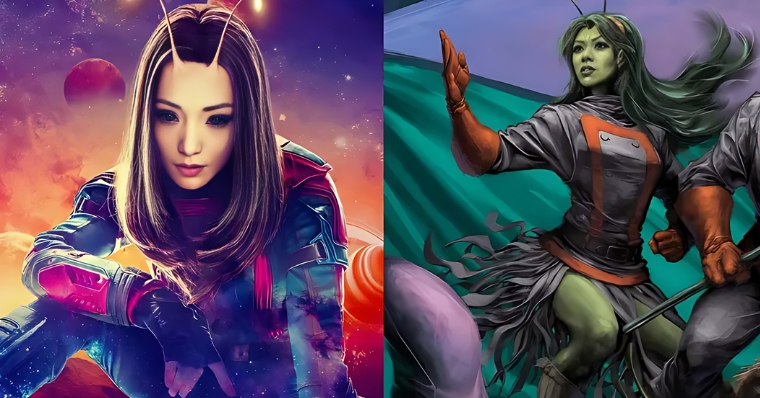
Mantis
Navigating the labyrinthine maze of the Marvel multiverse can be a Herculean task. One intriguing individual on this winding road is Mantis, a character whose Marvel Comics history is as bewildering as a Mobius strip. Known in some circles as the Celestial Madonna, she's a prophesied messiah-like figure among the Kree, destined to birth a "cosmic messiah." Her backstory toggles between being an Earth-born human with genetic modifications to being a straight-up extraterrestrial. Shift your gaze to the silver screen and find an entirely different creature. In the Marvel Cinematic Universe (MCU), Mantis is the progeny of Ego the Living Planet, making her the half-sister of Star-Lord. While comic book Mantis juggled a multitude of powers from telepathy to pyrokinesis to even plant control, MCU Mantis mainly dabbles in emotional manipulation. She can sense your feelings if she touches you, but that's just a sliver of her original abilities. So what gives? Why the dramatic divergence? In the comics, Mantis first swung into the Marvel world in "Avengers #112," crafted by Steve Engelhart and Don Heck. Here, she's introduced as a multicultural character, born to a Vietnamese mother and a German father. Abandoned by her parents and scooped up by the Kree, she grows up in a temple run by the enigmatic Priests of Pama. Later, she ventures out into the world to team up with the Avengers, utilizing her psychic gifts and martial artistry against Ultron and Thanos. Meanwhile, in the MCU, we're mainly introduced to her as an emotional crutch for Ego, later becoming a critical part of the Guardians of the Galaxy. But let's dig deeper. Mantis' powers in the comic books extend well beyond what the MCU portrays. Comic Mantis is a seasoned fighter who has honed her telepathic abilities and even can go astray. In terms of demeanor, she's the polar opposite of her screen persona, which falls more in line with a whimsical, socially awkward wallflower. On the contrary, comic Mantis is more assertive and empowered. If the Vision's "remarkable mind" assessment in "Avengers #134" is any indication, she's nothing short of a genius. Now, what about her appearance? The comic book Mantis metamorphoses into a green-hued being after conceiving a child with a member of the Cotati—intelligent, telepathic plants, mind you. MCU Mantis, however, maintains a mostly human façade, barring the unique antennae perched on her forehead. The portrayal of Mantis also varies across different media. Take Eidos-Montréal's Guardians of the Galaxy game as an example. Mantis is more aligned with her comics' version there, boasting martial arts prowess and precognitive abilities. She is a therapeutic companion to Gamora and is so confident she gives Drax a good trouncing. Quite the disparity from her big-screen avatar, who seems perpetually in awe of Drax's emotional intensity. But wait, the narrative divergence doesn't stop there. In Marvel's Guardians of the Galaxy game, she's already aware of the team's identity through her powers, not because they are celebrities in the cosmos. She's also an adept linguist who can speak Groot's language, a detail notably absent in the MCU. So, is there a possibility that we'll see more layers of Mantis in future MCU installations? Could she regain her lost abilities through interaction with the Priests of Pama, like in the games? While the MCU version of Mantis has a charm of its own, it would certainly be intriguing to see her evolve into the formidable character she is in the comics or in Eidos-Montréal's video game.

Drax
The world of the Marvel Cinematic Universe (MCU) is awash with vibrant characters that have been adapted, adjusted, and sometimes completely reimagined for the big screen. Perhaps one of the most intriguing of these adaptations is the character of Drax the Destroyer. If you're a die-hard fan of Marvel comics, you'd remember Drax as Arthur Douglas – your regular real estate agent with a knack for playing the saxophone. One fateful journey through the Mojave Desert with his family turned his world upside down. It wasn't just a casual road trip; it had Thanos watching them from above, plotting and planning. The aftermath? Arthur and his wife met a tragic end, but their daughter, Heather, was whisked away to a new destiny. Under the guidance of Thanos's own father, Mentor, she transformed into the super-hero, Moondragon. But Arthur's story didn't end there. The Eternal Kronos gave him a fresh lease on life, albeit in a more muscular and purpose-driven form. The mission? Take down Thanos. The reason was that the cosmic scales required someone formidable enough to take on the Mad Titan, and Drax, with his upgraded strength, was the perfect candidate. Comic book enthusiasts will assert that Drax's comic version is, without doubt, a formidable opponent for Thanos. And if things played out in the movies as they did in the comics, our intergalactic adventures would've been way shorter. Pivoting to the MCU, Drax's cinematic portrayal by Dave Bautista presents a Drax who is both earnest and comical. His candid nature and inability to grasp sarcasm or nuances in human conversation make him endearing and hilarious in equal measure. While he does seek vengeance for the demise of his wife and daughter, the accused isn't solely Thanos but also includes characters like Ronan the Accuser. It is a slight departure from the comics, but it serves the narrative structure of the MCU. Square Enix's 'Guardians of the Galaxy game provides another iteration of Drax, offering gamers an experience more aligned with the comic lore. Here, Drax's fury is laser-focused on Thanos following the tragic events of the Galactic War. This Drax's achievements are legendary; he's even managed to defeat Thanos, gaining admiration throughout the galaxy. In comparing the strength and prowess of Drax across different mediums, the MCU does seem to have toned down his abilities. And while Dave Bautista breathes life and depth into the character, the films sometimes employ Drax more for comic relief than showcasing his raw power. When you picture Drax, as portrayed in 'Guardians of the Galaxy Vol. 2', diving into a space worm's belly, it paints a comical rather than fearsome picture. This intentional power adjustment serves the broader narrative of the MCU. If Drax was as potent as his comic counterpart, battles against formidable foes like Ronan, Ego, and even Thanos would lack tension. The stakes need to be high, the odds need to be challenging, and the audience needs to be rooting for the underdog – a dynamic hard to maintain if one character can obliterate all threats. Moreover, the Guardians aren't just about Drax. It's a team of remarkable individuals – Gamora with her assassin skills, Groot with his sheer power and growth abilities, and Star-Lord with his charisma and gadgets. If Drax overshadowed them all, we'd lose the team's essence. All things considered, adaptations require a delicate balance. While rooted in their original essence, characters need to evolve to fit their new environment. And while Drax might not match his comic book strength in the MCU, he certainly captures our hearts with his unique blend of humor, vulnerability, and sheer determination.
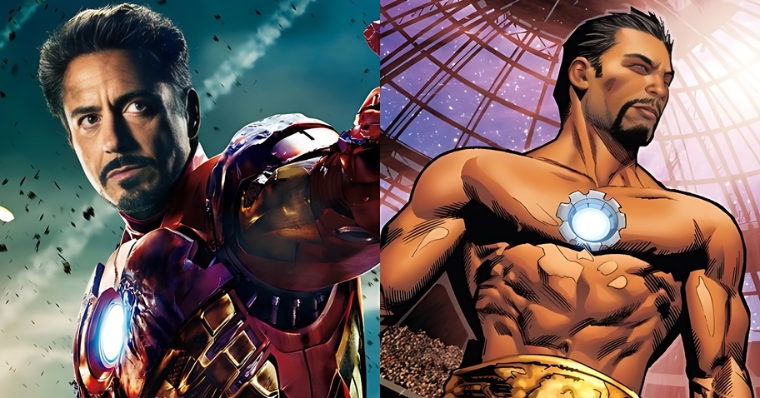
Tony Stark
The Marvel Cinematic Universe (MCU) has introduced us to a fascinating and layered portrayal of Tony Stark, a.k.a. Iron Man, which stands in stark contrast (pun intended) to his original comic version. And trust me, the difference is not just skin deep. It runs right down to the very core of his character. Remember when Robert Downey Jr. burst onto the big screen as Iron Man? He quickly became one of the world's most cherished super-heroes, joining an elite league previously inhabited by legends like Superman, Batman, Spider-Man, and Wolverine. While many praised the MCU for being faithful to the comics, in reality, the two portrayals of the character have significant variations. Consider Iron Man's iconic armor. In the comics, Tony Stark, ever the inventive engineer, has been tweaking and evolving his suits for ages. He didn't just stop at one; he developed several specialty armors tailored for unique situations. Compared to this, our cinematic Iron Man collection seems a tad modest, with most of his armors looking strikingly similar, albeit with a few exceptions, like the Hulkbuster. Let's talk intelligence. While MCU's Tony Stark often emerges as the smartest person in any given room, his comic counterpart would beg to differ. He's sharp, no doubt about that, but there are numerous instances where he's outsmarted by fellow heroes or cunning villains. He's a genius engineer in his right, but dreaming up something like Jarvis or Friday AI from scratch? That's a bit of a stretch. Tony's romantic life has its own set of twists. While the silver screen depicted a love-struck Iron Man settling down with Pepper Potts, the inked pages of the comics told another tale. There, Pepper finds love with Happy Hogan, leaving Tony Stark to navigate a series of fleeting romances with no lasting relationships to anchor him. Do you think the MCU's Iron Man is funny? Think again. In the comics, Tony's quips are fewer and further between. He's experienced different challenges and faced various threats, and the cumulative effect has made him a more solemn soul than his movie counterpart. Now, here's a major curveball. Those of you who loved "Captain America: Civil War" might recall Tony Stark's moral battle. But in the comics, he takes on a more antagonistic role during the Civil War arc, which caused quite a ruckus among readers, leaving many with a sour taste. Dive further into Tony's backstory, and the comics reveal that he was adopted by the Starks. A web of espionage, double agents, and interstellar meddling unfolds to explain his origins. Beyond this, while the MCU often painted Tony Stark as a rebellious industrialist who preferred to keep a distance from governmental affairs, the comics showcased a different trajectory. He held high-ranking positions such as Secretary of Defense and Director of SHIELD. Although to be fair, he wasn't particularly stellar in those roles. Here's a fun tidbit: others have donned the Iron Man suit in the comic universe, not just Tony. His friend James Rhodes, for instance, slipped into the Iron Man role so seamlessly that Tony eventually created the War Machine armor specifically for him. Even more intriguing is the fact that the formidable Doctor Doom and the brilliant Riri Williams also took turns becoming the face inside the iconic helmet. To wrap up this journey, it's crucial to underline one core difference. When "Iron Man" made its cinematic debut, it resurrected a comic character who was experiencing a lull in popularity. Robert Downey Jr.'s rendition transformed Tony Stark from an often unlikable figure in the comics to the endearing, complex hero we've grown to love in the movies. In conclusion, If you pick up an Iron Man comic expecting to see the charming and witty Robert Downey Jr. version, you might want to recalibrate your expectations. They share a name and a suit, but these two Tony Starks are worlds apart.











